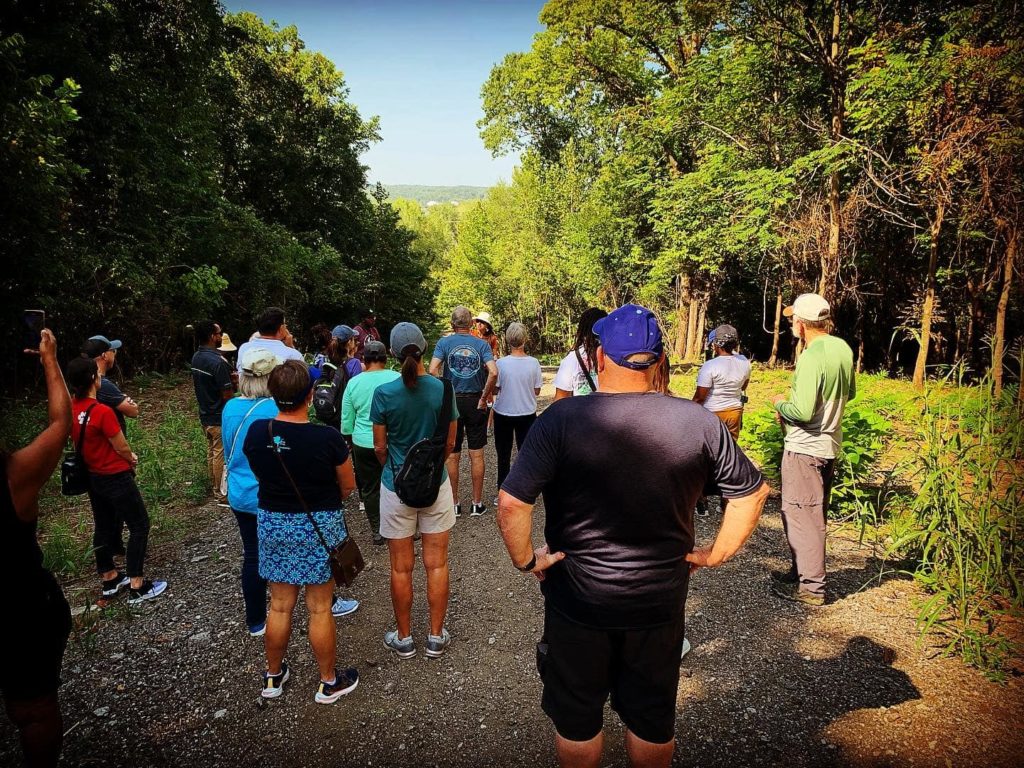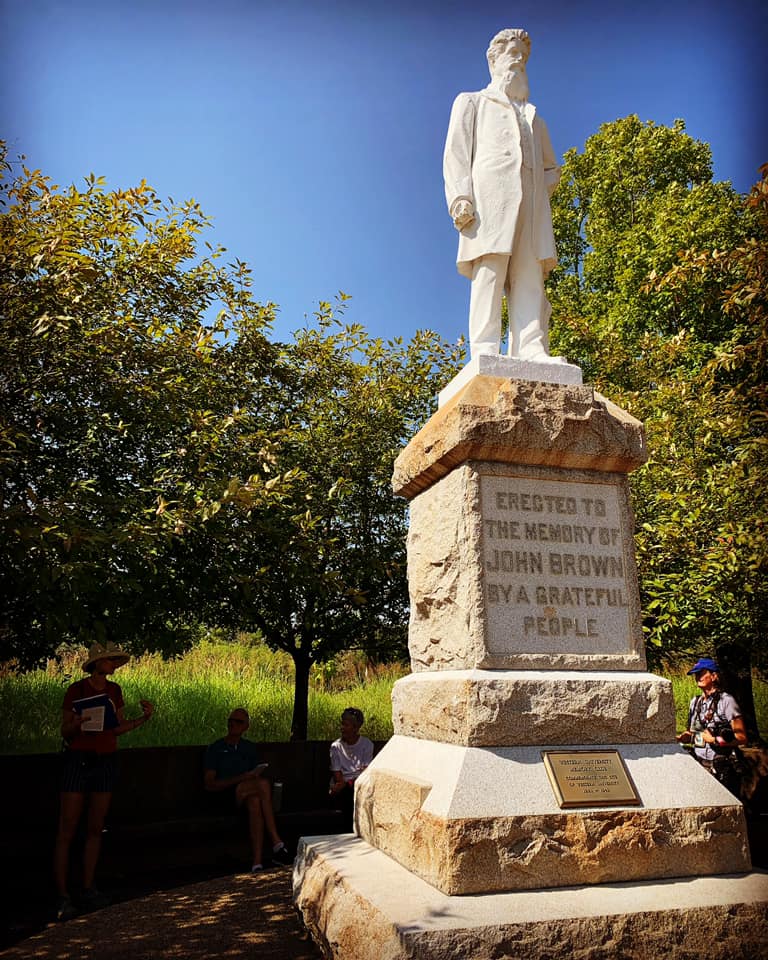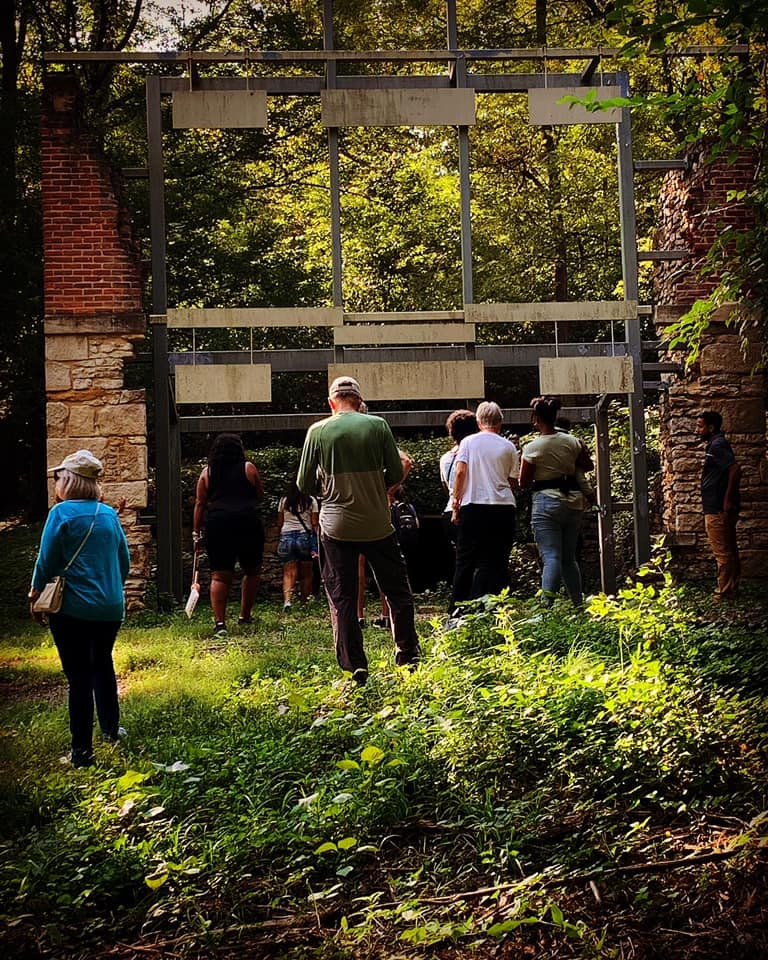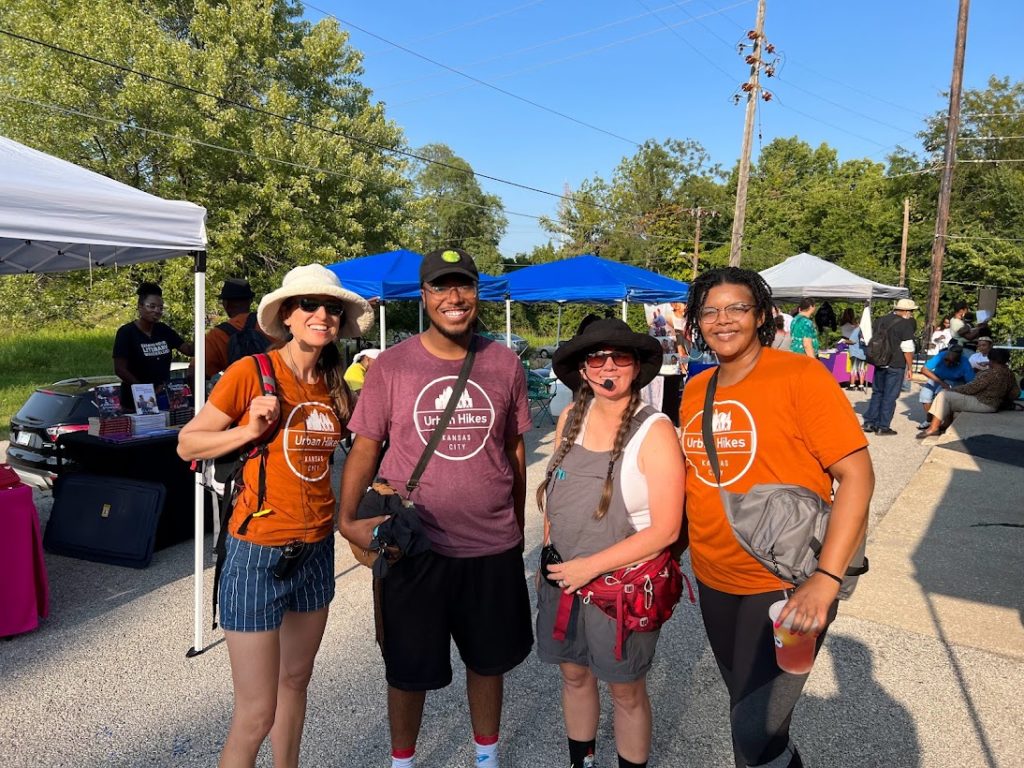by Asia Jones
Approximately 8 miles and 100 hikers later, Urban Hikes KC completed the official 9/13 Quindaro Ruins Hike! It was an awesome opportunity to join with businesses, community leaders, visiting travelers, and residents on both sides of the state line to explore the relics of Quindaro Township.
Boomtown

The township was created by a tri-racial collaboration of White, African American, and Native American Wyandot tribe members who wanted to create a place to call home where they could safely farm, start their families and start their businesses. When hikers stepped down from the Quindaro Overlook they saw remnants of a community through the eyes of the townspeople including recently stabilized buildings like the local brewery that withstood the temperance movement and has a cellar still intact that hikers could walk in and explore! They also had the chance to walk through the partially stabilized Wyandot House hotel with pillars of locally sourced limestone still intact and a view of the site where the town’s largest commercial building stood.
Abolitionists & the Underground Railroad

More impactful than the physical remnants of old Quindaro were the stories of the abolitionists and freedom seekers who fought to keep the township a free place along the pro-slavery Missouri border. Quindaro was the only free port on the Missouri river and was an active stop on the Underground Railroad, believed to have helped close to 100,000 freedom seekers to the north. Hikers heard the story of Sojourner Truth’s visit, the work of abolitionist John Brown, and the politics that fueled the constant tension from across the river. At its peak, there were approximately 800 residents, 100 private homes, and businesses up and down the main street, Kanza Avenue. Unfortunately, the town saw an economic decline caused by the Civil War, and the old Quindaro’s incorporation was repealed in 1862.

After the Civil War
There was still a chance for renewal with the opening of the Freedman’s School or what later became known as Western University, the first Historically Black College or University (HBCU) west of the Mississippi. The trek took hikers along the old campus grounds where they heard about the famous Jubilee singers, the university’s connection to the Vernon School, and the Underground Railroad Museum run by Lester Smith.
The Urban Hikes KC trek through the Quindaro Ruins was a new way to present the rich history of Wyandotte county and hikers got to understand the importance of preserving the history of the township. There are future opportunities for hands-on in preservation efforts through the Western University Board and JCCC Kansas Studies Institute.
I’m so grateful to my team of guides who made this impactful day happen! We look forward to see what the future holds!

